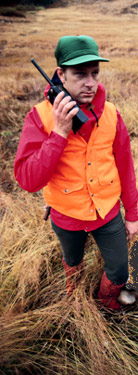
Here are a few tips on choosing the correct FRS or GMRS.
- Look at your budget. If you want to save money and expect to use the radios over short range (less than 2 miles), choose FRS radios. Go for GMRS radios—a newer type—if you need range up to 5 miles (needs an FCC license: wireless.fcc.gov/uls/applications).
- If you need multiple radios, buy them from the same manufacturer. Some features (such as the so-called privacy codes) don’t always work between brands.
- The range claims of two-way radios may not be accurate. Walls, hills, trees, people and almost anything else will reduce that range.
- Look for radios with 14 channels to optimize your chances of finding a less crowded channel.
- Some people look for a scanning function in order to avoid busy frequencies, or find friends who are on the radio. This enables people to listen in on other people’s conversations. If you want more privacy, go for an FRS radio with 38 subchannels. With these, you can only talk to someone on the same channel/subchannel combination. While this doesn’t ensure complete privacy, it does make it a little harder for others to find you.
The scramble feature found on some FRS radios offers more privacy than subchannel codes. A scrambler makes your conversation unintelligible to others listening in. The Kenwood FreeTalk offers this feature. - Models with voice-activated transmission can be activated with voice commands, allowing hands-free usage during busy outdoor activities.
- If you need to remain quiet while you use the radio, you might want to pick a unit with a vibrating call feature (useful feature for some stealth outdoor games).
- A low-battery alert ensures you won’t get stuck on the slopes with a dead radio. Some models are powered by AA or AAA alkaline batteries, while others use NiMH (nickel metal hydride) batteries, which last longer.
- Most FRS radio antennas are rugged enough to withstand heavy use. GMRS radios, unlike FRS radio, may also have an external antenna.
You can use FRS and GMRS radios in the United States, Mexico and Canada, but they’re illegal in Europe. Finally, a word of caution: never say anything on a two-way radio that you wouldn’t say in public. They’re not secure lines.
– Victor R.